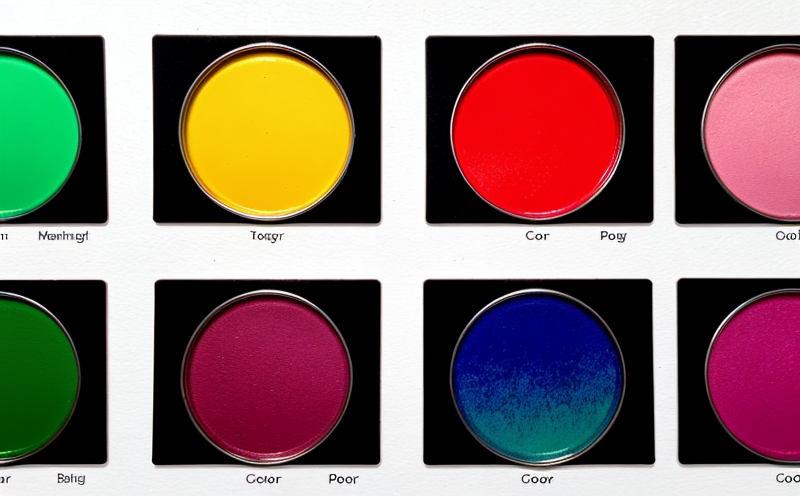ASTM E308 Spectrophotometric Testing of Lighting Components
The ASTM E308 method is a cornerstone in the evaluation and quality assurance of lighting components. This standard provides precise procedures for determining the color characteristics, including spectral power distribution (SPD), of light-emitting materials. By using spectrophotometers that comply with the latest standards, we ensure accurate measurements and reliable data.
This service plays a critical role in industries where precision and consistency are paramount. For instance, in lighting design, understanding the exact color appearance under various conditions is essential for meeting aesthetic and functional requirements. Our tests help manufacturers identify any inconsistencies or variations that could affect product performance and customer satisfaction.
One of the key aspects of ASTM E308 testing involves preparing the specimens correctly to ensure accurate results. This includes cleaning, mounting, and positioning the samples in a controlled environment. The use of standardized conditions minimizes errors due to external factors such as temperature or humidity. Once prepared, the test illuminates the sample with known wavelengths of light and records the reflected or transmitted light intensity across a broad spectrum.
The data collected during this process is then analyzed using advanced software tools that interpret the spectral power distribution curves. These analyses provide insights into not only the color but also the overall quality of emitted light, including its efficacy and potential impacts on human visual perception. Such information is invaluable for optimizing product design and ensuring compliance with international standards.
The results from ASTM E308 testing are used by our clients to make informed decisions about their products' performance. By adhering strictly to the guidelines set forth in this standard, we help ensure that lighting components meet both industry expectations and regulatory requirements worldwide.
In conclusion, ASTM E308 spectrophotometric testing is more than just a technical procedure; it's an essential tool for maintaining high standards of quality control across various sectors. Whether you're developing new products or ensuring existing ones continue to perform at their best, this service offers the accuracy and reliability needed to stay ahead in today’s competitive market.
Scope and Methodology
The scope of ASTM E308 testing encompasses a wide range of applications within lighting design, manufacturing, and quality assurance. The primary objective is to measure and report the color characteristics and spectral power distribution (SPD) of light sources accurately.
- Color Temperature: Determining whether the emitted light matches specified color temperatures.
- Spectral Power Distribution: Measuring the intensity of light at each wavelength to understand its unique signature.
- Luminous Intensity: Assessing how much light is produced by a source in all directions.
The methodology involves using high-precision spectrophotometers that adhere strictly to ASTM E308 specifications. These instruments are calibrated regularly against international standards like ISO 17651, ensuring consistent and accurate readings across multiple tests.
Preparation of the samples is crucial for obtaining valid results. This includes cleaning the surface of the light source thoroughly, mounting it properly within the instrument's chamber, and adjusting parameters such as distance from the sensor and viewing angle.
Once prepared, the sample is exposed to a series of standardized test conditions. During this exposure period, the spectrophotometer captures detailed information about how much light is emitted at different wavelengths. This data forms the basis for subsequent analysis and reporting.
The final step in the process involves interpreting the collected data according to ASTM E308 guidelines. This includes plotting the spectral power distribution curve, calculating color coordinates, and assessing compliance with relevant industry standards.
Customer Impact and Satisfaction
Our customers benefit significantly from our ASTM E308 testing services through enhanced product quality and improved customer satisfaction. By ensuring that lighting components meet stringent color and spectrum criteria, we help prevent issues related to color inconsistency or incorrect spectral content.
For design engineers involved in creating innovative products, these tests provide critical feedback on how their designs will perform under different lighting conditions. This allows for early identification of potential problems and adjustments before production begins, saving time and resources.
Quality managers can use the results from our testing to verify that all manufactured items adhere strictly to specification. This reduces the risk of non-conformance during audits or inspections by regulatory bodies. It also helps maintain consistency across large-scale productions, ensuring uniform quality standards are maintained throughout each batch.
Compliance officers find value in our services because they ensure adherence to international standards like ASTM E308 and IEC 61547-2, which specify acceptable limits for color appearance and spectral power distribution. Meeting these requirements demonstrates commitment to best practices and helps protect against legal challenges or recalls.
Finally, procurement teams gain confidence knowing that the components they source have been rigorously tested according to recognized protocols. This reduces supply chain risks associated with substandard materials while fostering long-term relationships based on mutual trust and reliability.
Frequently Asked Questions
On the other hand, correlated color temperature is an absolute measure that indicates which color in the reference blackbody radiator spectrum matches closely with the color appearance of the light source. This value provides a more accurate representation of how the human eye perceives the color emitted by the lighting component being tested.
Competitive Advantage and Market Impact
Adopting ASTM E308 testing offers significant competitive advantages in today's market. By providing comprehensive spectral data, this method enables companies to innovate more effectively while staying compliant with global standards.
In the competitive lighting industry, these advantages translate into increased market share and better profitability. Companies that invest in ASTM E308 testing demonstrate their commitment to excellence, which resonates positively with both internal stakeholders and external customers alike.





